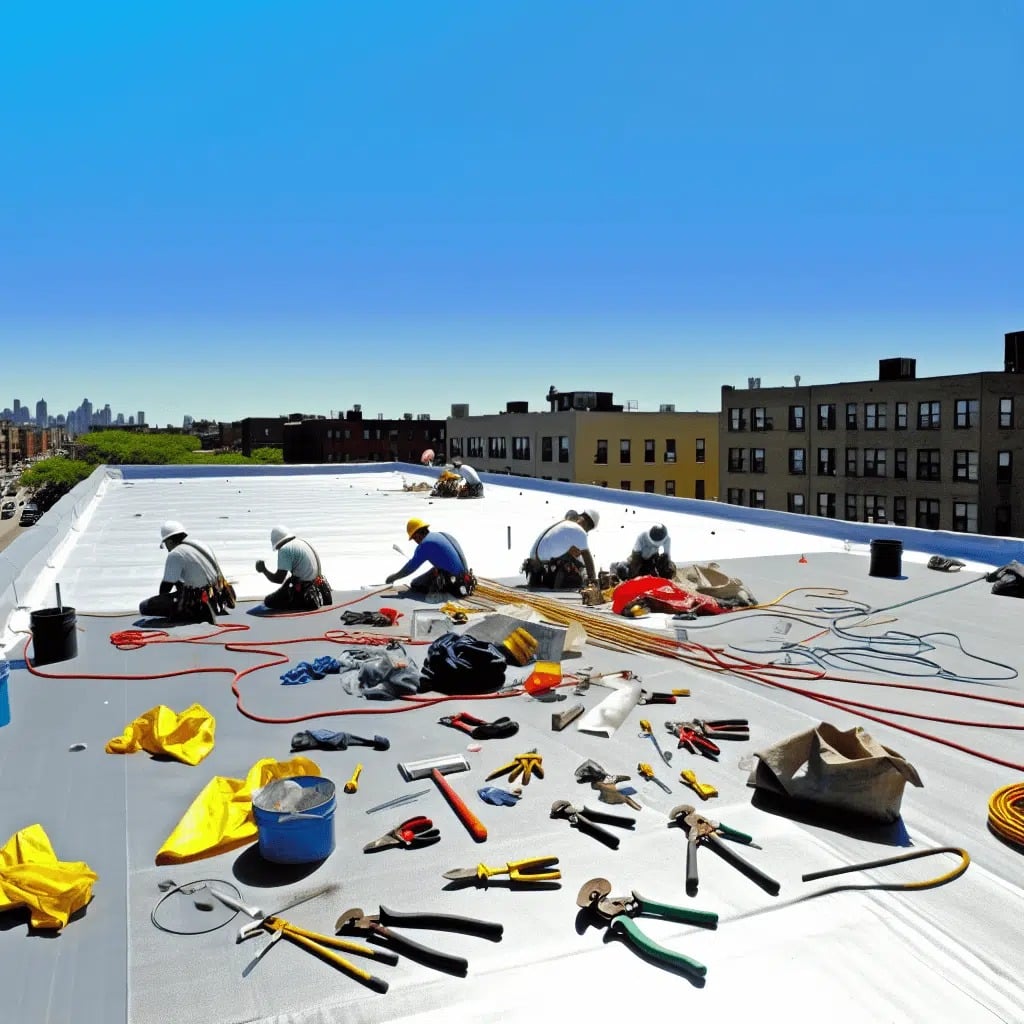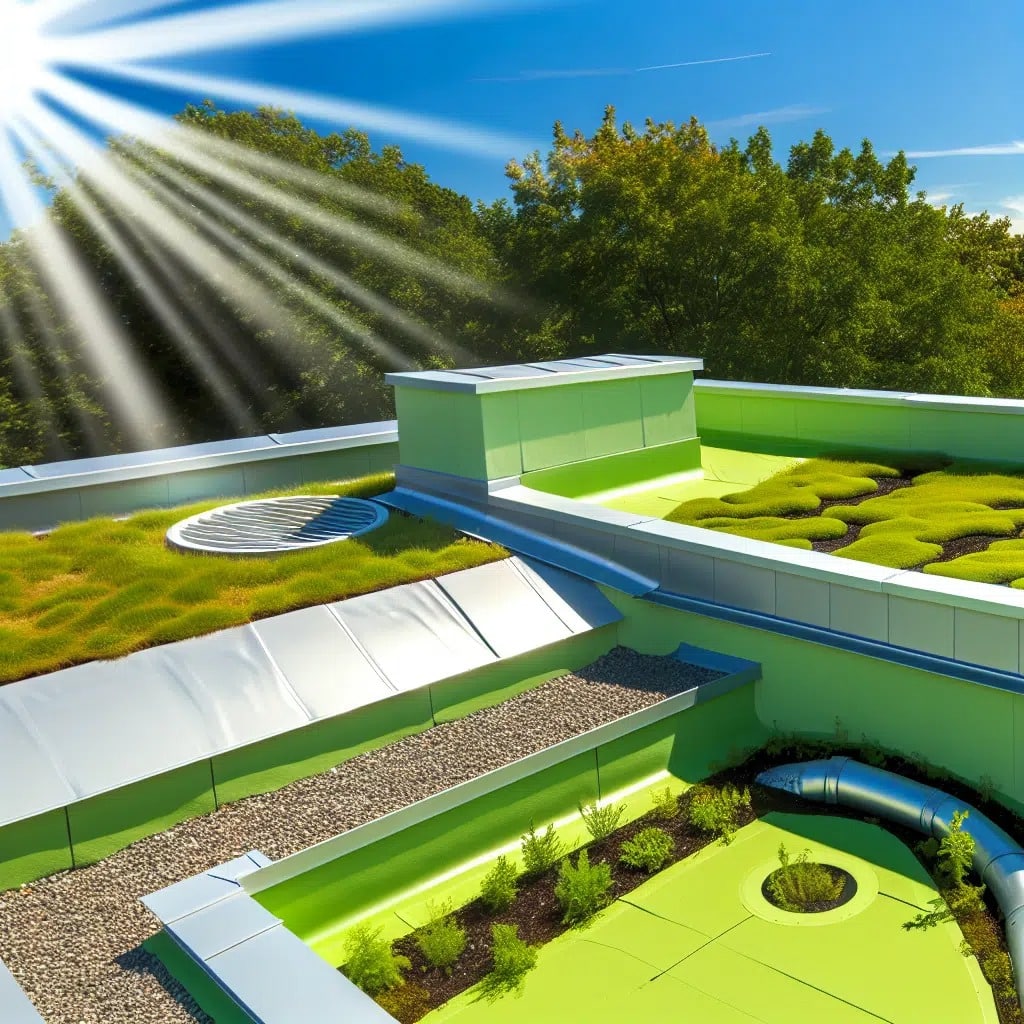Understanding the Vital Role of Roof Valleys
Your home’s roof is more than just a structural cap; it’s a complex system designed to protect you and your loved ones from the elements, and the valleys play a pivotal role in this defense. Imagine your roof during a downpour, with water cascading across shingles, seeking its way to the ground; intact and efficient roof valleys are what ensure this water travels safely, averting potential disasters. It’s not just about mitigating water damage; it’s about safeguarding the integrity of your entire home. In Kingston, where weather can be unpredictable, particularly in the bustling months of spring, the urgency to maintain proper roof valleys becomes paramount. Overlooking this crucial aspect could mean tolerating hidden risks that invite substantial repair costs down the line.
As the first line of defense against water infiltration, any compromise in your roof’s valleys invites a cascade of issues. Leaks originating in these areas often go unnoticed until significant damage has occurred, undermining the very structure of your home. It’s a slow menace, one that eats away at your peace of mind with every passing storm. This is why the conversation on roof valleys isn’t one to postpone; immediate action is key. After all, protecting the valleys is akin to protecting the life within the walls beneath them.
When discussing materials for your roof valleys, it’s crucial to address material selection that aligns with local climate challenges. Many Kingston homeowners face the common concern of choosing materials that can withstand heavy rain and snow without succumbing to corrosion or wear. You need materials that offer durability and reliability, to maintain the valley’s function and appearance over time. This is where expert knowledge translates into long-term savings, by selecting materials that can extend the lifespan of your roof valleys and, by extension, your entire roofing system. Trust in quality is not just a choice; it’s an investment in your home’s future security.
Choosing the Ideal Roof Valley Material
Material choice is a significant consideration when dealing with roof valleys, as the right selection can mean the difference between a dependable roof and a potential financial sinkhole. Metals such as copper and galvanized steel provide resiliency against the elements, ensuring that valleys remain effective during heavy rains and snowfall. The climate in Kingston, RI, demands materials that can withstand its demanding weather, which is why expert advice is crucial. As renowned providers of residential roofing solutions, we understand the importance of using robust materials tailored to regional challenges. The longevity of your roof valleys depends on this foresight, so choosing wisely, guided by seasoned professionals, is a step you cannot afford to miss.
Installation and Maintenance: Ensuring Longevity
Proper installation of roof valleys dictates not only their immediate effectiveness but also their capacity to withstand the tests of time. An expertly installed valley uses precise techniques to ensure that no water pools or stagnates, a common precursor to leaks and damage. It’s not just about placing materials; it’s about understanding how water flows over your roof and ensuring that valleys channel it efficiently and without obstruction. Regular maintenance, including the clearing of debris and inspections for potential punctures or separations, can prevent most issues before they even begin. By incorporating routine check-ups and professional installations, you safeguard your home against the pitfalls of roof valley neglect.
Expertise at Your Service
A professional’s insight into the complex world of roof valleys is invaluable, and this is where expertise shines. Knowing when to recommend a seamless valley versus a valley with a center metal or woven technique takes years of experience. This knowledge is not just academic; it’s grounded in numerous successful installations and maintenance projects. Local professionals understand the unique architectural styles across Kingston and can recommend the most suitable valley type for your home. With trusted craftsmanship and up-to-date methods, your roof valleys become an asset to your home rather than a liability.
Final Considerations for Roof Valley Integrity
As you weigh the options for your home’s roof valleys, it becomes clear how integral they are to the overall health of your roofing system. The correct installation and material choice not only prevent water damage but also contribute to the aesthetic appeal of your property. A well-maintained roof valley ensures that your home stands strong against the diverse weather conditions in Kingston, RI, from heavy snow to spring showers. With this understanding, proactive decisions in care and maintenance of roof valleys become a top priority for any homeowner. It is these decisions that preserve the value and safety of your dwelling for years to come.
The Role of Expert Roofers in Roof Valley Care
Roof valleys require an expert touch, one that comes from years of experience and a deep understanding of roofing systems. Whether it’s the initial installation or regular maintenance, the expertise of a seasoned roofer is indispensable. Homeowners should seek out roofing professionals who specialize in the nuanced work of roof valley installation and care. By choosing a reputable company, you ensure a partnership that will extend the longevity and performance of your roof. Residents of Kingston can rely on the authority of Rinaldi Roofing to provide solutions that stand the test of time.
Protecting Your Home with Quality Roof Valley Solutions
The safety and security of your home are directly influenced by the functionality of your roof valleys. As a final point, remember that selecting a qualified roofing contractor is an essential step in safeguarding your investment. These professionals not only deliver quality workmanship but also provide peace of mind. A reliable roof is one where every component, roof valleys included, operates at peak efficiency to shield your home from the elements. Commit to quality, and you commit to a home that remains a sanctuary against all weather, for seasons to come.
Insights From The Experts
Tip 1:
Choose high-quality materials for roof valleys to increase durability and prevent frequent wear. Metals like copper and aluminum offer longevity and superior water flow management.
Tip 2:
Ensure that roof valleys are installed with a proper slope to enable efficient water drainage and prevent pooling, which can lead to leaks and structural damage over time.
Tip 3:
Opt for a professional installation to guarantee that roof valleys are properly sealed and aligned. Incorrect installation can lead to costly damages that are avoidable with expert service.
Tip 4:
Regular maintenance, including debris removal and inspection for any signs of wear or damage, is vital for preventing leaks and extending the lifespan of your roof valleys.
Tip 5:
Consider the visual aesthetics as well as functionality when selecting the type of valley for your roof. The right style can enhance the overall look of your home while also providing necessary protection against the elements.
Expert Answers to Your Roof Valley Questions
1. What is the importance of selecting the right materials for roof valleys?
Choosing the correct materials for your roof valleys is essential as they must resist the local weather conditions, prevent leaks, and fit the architectural style of your house. Durable materials like copper or galvanized steel can vastly extend the life of your roof valley.
2. How can I ensure my roof valleys are effectively preventing water leakage?
Regular inspections and keeping your roof valleys clear of debris are key; consider professional installation to ensure proper slope and sealing for optimal water flow.
3. What are the differences between open, closed-cut, and woven valley installations?
Open valleys have a metal liner exposed to the elements, closed-cut valleys overlap shingles from one side, while woven valleys interlace shingle courses from both sides, each offering distinct aesthetic and functional benefits.
4. Can improper installation of roof valleys lead to significant roof damage?
Yes, improper installation can lead to water pooling, leaks, and eventually structural damage, highlighting the need for skilled professional installation.
5. What are the best practices for maintaining roof valleys to prolong their lifespan?
Ensure regular debris removal, inspect for material integrity, and promptly repair any issues to maintain the efficiency and longevity of your roof valleys.



